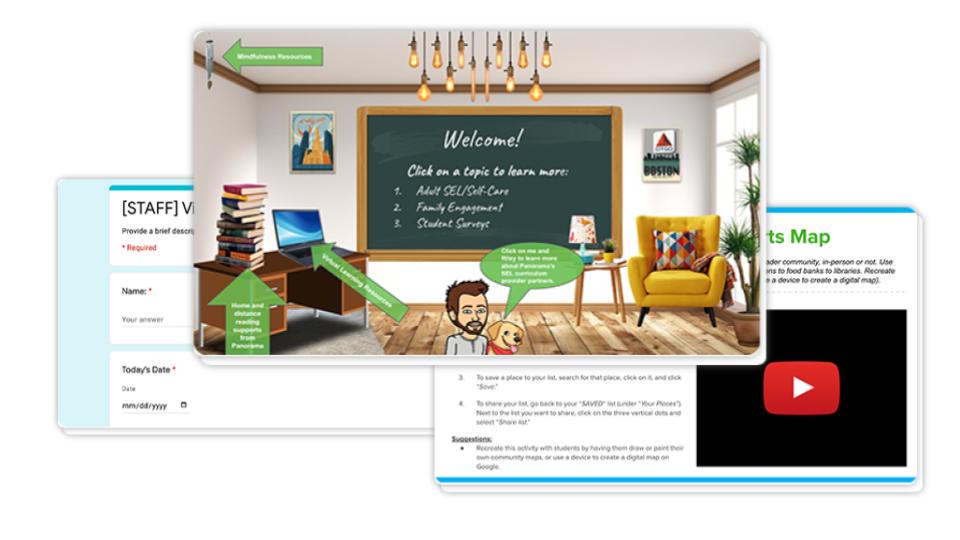This post was published on November 6th, 2020.
What is the CARES Act?
The Coronavirus Aid, Relief, and Economic Security (CARES) Act, under the Education Stabilization Fund, provides states with $13.2 billion in emergency education funding known as the Elementary and Secondary School Emergency Relief Fund. The funding aims to support school districts—including public schools, private schools, and charter schools— through the COVID-19 pandemic crisis in addition to a separate amount for higher education.
According to the National Conference of State Legislatures, states received relief funding proportional to the Elementary and Secondary Education Act (ESEA) Title-IA, and must distribute at least 90 percent of funds to local education agencies (LEAs) based on their proportional share of ESEA Title I-A funds.
While the funding legislation was officially passed by Congress at the end of March, many K-12 schools have yet to spend their allocation. However, as the holidays approach, so, too, do some states’ application deadlines for the use of CARES Act funds.
My School or District Still Has CARES Act Funding—How Can I Spend It?
School and district leaders continue to face uncertainties that make budgeting and planning for the coming fiscal year difficult. It remains unknown whether schools will return to, or continue with, remote learning due to spikes in COVID-19 and whether the federal government will provide additional relief funding this school year.
If you are just beginning your planning process, FutureEd has compiled a helpful summary of the 12 allowable uses of the $13.2 billion in the package's K-12 relief fund. Some examples include spending on summer learning, personal protective equipment (PPE), and bridging the digital divide for students and families without internet access.
If you are a school or district leader interested in exploring how schools and districts are using relief funds to support the whole child, keep reading. However, keep in mind that your school or district may be subject to funding stipulations that vary by state, especially since the U.S. Department of Education has given states the ability to apply for waivers to loosen the regular restrictions on how they spend federal funds, including the additional use of Title IV funds for technology.
1. Understand the Needs and Priorities of Stakeholders During COVID-19
C.A.R.E.S. ACT SEC. 18003 (d) (8) Planning for and coordinating during long-term closures, including how to provide meals to eligible students, how to provide technology for online learning to all students, how to provide guidance for carrying out requirements under IDEA and how to ensure other educational services can continue to be provided consistent with all Federal, State, and local requirements.
For many school districts, the first step in supporting the whole child has been to understand the needs of families, staff, and students. Since the start of school building closures in March, elevating community voices and priorities has been essential in informing crisis response, providing food and other critical resources such as the internet and devices, and drafting plans for school reopening.
Panorama’s research-based survey content and accessible survey platform has been used by systems like Indianapolis Public Schools, the NYC DOE, and Ector County ISD to elevate student, family, and staff voices during the COVID-19 pandemic. Panorama’s Distance Learning Surveys help districts understand and address the needs of their communities with comprehensive feedback on distance learning, well-being, social-emotional learning, and access to resources and technology. Panorama Student Success allows educators to coordinate and document student interventions and supports in a virtual setting. Read more about NYC's Remote Learning Survey with Panorama and How Indianapolis Public Schools Is Keeping Students Connected and Learning At Home.
Download: Panorama Distance Learning Survey for Families, Students, and Staff
[Understanding Needs Continued] Supporting Student Mental Health & Well-Being at Scale
C.A.R.E.S. ACT SEC. 18003 (d) (9) Providing mental health services and supports.
For school districts like Clark County School District (NV), the pandemic has amplified the existing mental health crisis for students, especially students in low-income neighborhoods: "Many children miss seeing their friends, don’t interact as much with trusted adults, lack quiet or privacy at home, and are experiencing financial burdens associated with family job losses" [Nevada Independent].
The conversation led to the Lifeline program.
A key ingredient behind the program’s success is a student well-being survey from Panorama that has served as a “check-engine light” for children’s mental health. Through Nov. 23, the Panorama survey at the dozen pilot schools has directly led to 1,169 virtual and 286 in-person mental health sessions with students, district officials said. It also has resulted in nine suicide protocols, which occur when a student is self-harming, considering self-harming or expressing suicidal thoughts. (Other suicide protocols — a step-by-step process for connecting students with appropriate mental health care — have been initiated by teacher, peer or family member referrals and other warning signs.)
Download: Panorama Student Well-Being Survey
2. Incorporate Social-Emotional Learning and Equity in School Reopening and Recovery Plans
C.A.R.E.S. ACT SEC. 18003 (d) (3) Providing principals and other school leaders with the resources necessary to address the needs of their individual schools.
The layers of trauma have been significant this year. Administrators, teachers, students, and families have faced challenges around their own health and the health of loved ones, and the economic ripples of the pandemic. To provide school-wide and targeted student supports, many school leaders have begun gathering baseline data on the social-emotional well-being and cultural competency of students, teachers, and staff. This data can inform school improvement planning, professional development, and tiered supports.
Panorama for Social-Emotional Learning helps school leaders understand and act on the social-emotional strengths and needs of their students, teachers, and staff. Panorama provides professional development to school staff, actionable data reports, and an SEL intervention management platform with resources from leading SEL curriculum providers.
Download: Panorama Social-Emotional Learning Survey [Equity Measures Included]
3. Mitigate Learning Loss through Tiered Supports for Students
C.A.R.E.S. ACT SEC. 18003 (d) (9) Purchasing educational technology (including hardware, software, and connectivity) for students who are served by the local educational agency that aids in regular and substantive educational interaction between students and their classroom instructors, including low-income students and students with disabilities, which may include assistive technology or adaptive equipment.
As COVID-19 continues to affect schools and communities, educators are challenged to support students experiencing learning loss and to prevent the widening of achievement gaps in hybrid or remote learning settings. In many cases, schools and districts have focused on building or strengthening a multi-tiered system of supports (MTSS), PBIS, or RTI model to provide equitable services to students. Districts are investing in solutions and early warning systems that can aggregate key student support data, help staff quickly identify at-risk students, and build and monitor tiered intervention plans during distance learning.
Panorama Student Success brings student support data across coursework, assessments, behavior, attendance, and social-emotional learning (SEL) into one platform. Educators can easily identify students experiencing learning loss, assign evidence-based interventions, and collaborate with interventionists, support staff, and administrators inside Panorama. Dashboards also allow school leaders and educators to view performance data by demographics including gender, race and ethnicity, FRPL status, and English learner status.
Download: Distance Learning Interventions
Learn More About Partnering With Panorama on CARES Act Funding
Since 2012, Panorama has been dedicated to helping schools and districts support the whole child. To find out more about our work and current partnerships with more than 900 school districts, the CARES Act, and other grant programs, please submit a contact request form or join us for one of our upcoming free education webinars and workshops.






